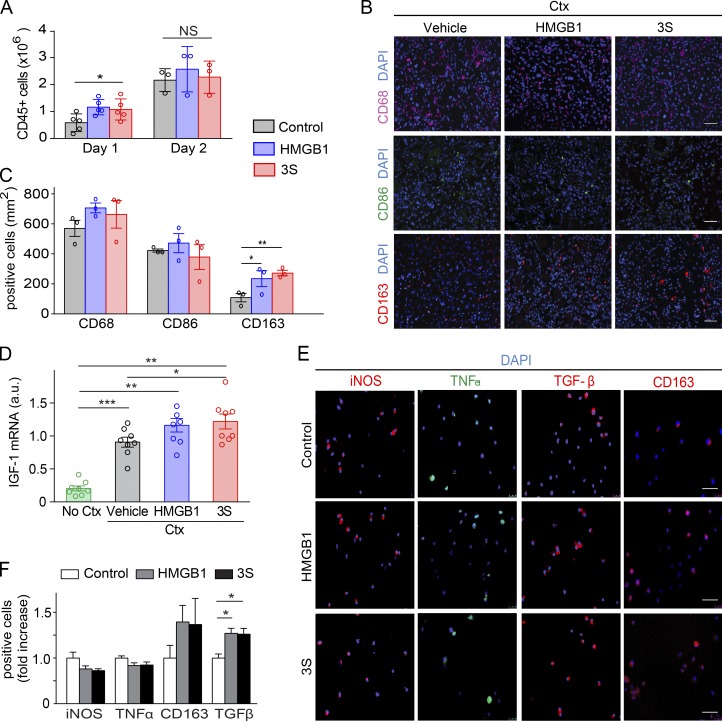Figure 3.
fr-HMGB1/3S modulates macrophage polarization toward a tissue-healing phenotype. (A–D) TA muscles were injected with Ctx alone or Ctx plus WT fr-HMGB1 (HMGB1) or 3S. (A) Quantification of CD45+ cells isolated from injured muscles at days 1 (n = 5 mice per group of three independent experiments) and 2 (n = 3 mice per group of three independent experiments) after injury. (B and C) Representative immunofluorescence staining for CD68, CD86, and CD163 on sections of TA muscles at day 5 after injury (B) and quantification of CD68+ (n = 3 mice per group), CD68+CD86+, and CD68+CD163+ cells (n = 5 mice per group) in sections of TA muscles (C), two independent experiments. Bars, 50 µm. (D) Quantitative PCR of IGF-1 mRNA in triceps at day 5 after injury. n = 9 mice per group of three independent experiments. (E and F) Mouse bone marrow–derived macrophages were cultured for 7 d in DMEM conditioned by L929 cells (enriched in CSF-1) and polarized for 3 d toward a proinflammatory phenotype by stimulation with IFNγ (50 ng/ml) with or without 40 nM fr-HMGB1 or 3S. Representative images of macrophages (E) and quantification of cells positive for iNOS, TNFα, TGFβ, and CD163 expression, analyzed by immunofluorescence staining (F; fold increase vs. control; at least three independent experiments). Bars, 50 µm. Data are means ± SEM. Statistical significance was assessed with one-way ANOVA plus Dunnett’s post-test in A, C, D, and F. *, P < 0.05; **, P < 0.01; ***, P < 0.001.

